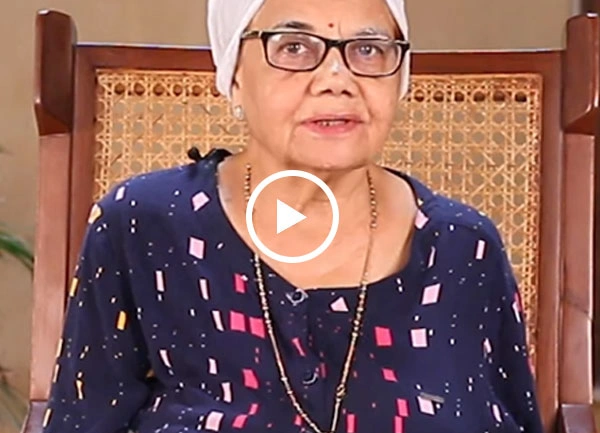

Successful Treatments
Clinics
Doctors
What is Dysmenorrhea?
Dysmenorrhea is a medical term used to describe pain that accompanies menstruation. It is subdivided into two types: primary dysmenorrhea and secondary dysmenorrhea. Common menstrual cramps not related to other diseases constitute primary dysmenorrhea, while secondary dysmenorrhea results from an underlying reproductive health disorder, such as endometriosis or fibroids.
Symptoms
Menstrual Cramps
Intense lower abdominal aching typically radiates to the lower back and thighs. This pain can be pulsating in some women, particularly interfering with daily functioning, and making it difficult to concentrate or complete routine activities.
Nausea and Vomiting
For several women, there is presence of gastrointestinal discomfort at the time of menstrual pain and often results in nausea and, sometimes, vomiting. This discomfort heightens other feelings of illness accompanying menstruation altogether.
Fatigue
The ache of dysmenorrhea can cause fatigue and drowsiness, but it is more because of the symptoms coupled with hormonal changes that leave the people affected considerably drained of energy, sometimes impaired in performing their day-to-day activities.
Headaches
It is believed that hormonal changes have led to headaches or even migraines accompanying the menstrual cycle. Headaches resulting from hormonal changes may differ in intensity, but they will be contributing factors to these already miserable circumstances.
Mood Swings
There can also be mood fluctuations that may trigger irritability or anxiety. The hormonal alteration with menstruation can cause an upset in mood stability that causes some women to be at a heightened risk for emotional stress during this time.
Dysmenorrhea Causes
There are two types of causes of dysmenorrhea, namely primary and secondary causes.
Primary Dysmenorrhea Causes
This type typically results from the excessive production of prostaglandins, hormone-like substances that cause uterine contractions. Contributing factors in primary dysmenorrhea are:
Hormonal Imbalances: The fluctuations of levels of the hormones, especially oestrogen and progesterone, could play a huge role. High levels of prostaglandins which usually accompany this hormonal imbalance give rise to greater contraction of the uterus and higher pain during menstrual periods.
Uterine Position: A retroverted uterus may increase spasms and pain. Malpositioning of the uterus places added pressure to the surrounding tissues and nerves, thus aggravating the severity of menstrual pains.
Secondary Dysmenorrhea Causes
This is related to an underlying pathological condition, such as:
Endometriosis: This is a medical condition in which endometrial tissue grows outside the uterine cavity, commonly on the ovaries and other pelvic organs. Other abnormalities can cause much pain, especially at the time of menstruation, since this misplaced tissue responds to the hormonal changes in the same way as normal uterine tissue.
Uterine Fibroids: These are tumour growths within the uterus which may be small or large, benign growths. Fibroids, depending on where they are, often cause pain and pressure which could lead to heavy menstrual flow and might consequently lead to secondary dysmenorrhea.
Pelvic Inflammatory Disease (PID): PID is an infection of the female reproductive organs, often acquired from sexually transmitted diseases. This condition causes a large amount of inflammation and scarring in the pelvic cavity that could cause pain during menstruation and other discomforts.
Ayurvedic Treatment for Dysmenorrhea
Ayurveda treats dysmenorrhea through a holistic approach, balancing doshas, managing circulation, and enhancing reproductive health.
Herbal Remedies (Ayurvedic Medicine for Dysmenorrhea)
Some of the critical Ayurvedic herbs that help reduce the symptoms of dysmenorrhea are:
Ashoka (Saraca asoca): The herb is quite potent and helps in muscular growth of the uterus and reduces the menstrual pain. Ashoka is a drug used in Ayurvedic practice and supports and strengthens the female organs and helps to produce a healthy menstrual cycle by easing out pains and discomforts.
Shatavari (Asparagus racemosus): Shatavari is said to be an excellent hormone balance and reproductive system nourisher. This adaptogenic herb regulates hormones in the system thereby promoting an all-around reproductive health system, and, therefore, it is especially helpful to women diagnosed with dysmenorrhea.
Ginger (Zingiber officinale): It is widely known to have natural anti-inflammatory properties. The herb can help reduce menstrual cramps. Its advantages to blood circulation and inflammation reduction offer an easing from painful symptoms associated with dysmenorrhea.
Turmeric (Curcuma longa): The anti-inflammatory curcumin compound of turmeric makes this herb the good remedy for dysmenorrhea at home concerning reduction of pain and inflammation during menstrual periods.
Detoxification and Panchakarma for Dysmenorrhea
Detox therapies, especially Panchakarma, are an important part of the management of this condition in Ayurveda. These treatments cleanse the body of toxins and restore balance, thereby helping to relieve symptoms of this condition. Key treatments include:
Basti (Medicated Enema): Basti can help balance Vata dosha by targeting the lower abdomen and relieving menstrual pain. This detox treatment will help the body cleansing effects of the remedy, which then will minimise excess dosha. It can thus overall improve reproductive health by helping to ease menstrual pain.
Virechana (Purgation Therapy): In this therapy, the body eliminates all the toxins. It enhances blood circulation and gynaecological health. Furthermore, it renders the person devoid of harmful toxins accumulated in the digestive tract as well as in the blood, which helps to have a better menstrual cycle .
Diet and Lifestyle Changes
In addition to herbal remedies, specific dietary and lifestyle adjustments can enhance the effectiveness of Ayurvedic treatments for dysmenorrhea.
Dysmenorrhea Diet:
A balanced diet rich in fruits, vegetables, whole grains, and healthy fats is essential. Incorporate foods with anti-inflammatory properties, such as:
Dark Leafy Greens: These are rich in vitamins and minerals that can help reduce inflammation and support overall health.
Nuts and Seeds: Providing essential fatty acids, nuts and seeds help maintain hormonal balance and can improve reproductive health.
Whole Grains: These help maintain steady energy levels and provide essential nutrients needed for overall well-being.
Avoid Processed Foods and Caffeine:
Processed foods and caffeine can exacerbate symptoms and contribute to inflammation. Limiting these in your diet can help alleviate discomfort during menstruation.
Hydration:
Staying hydrated is crucial. Drinking warm herbal teas, especially ginger tea, can soothe cramps and promote relaxation, further aiding in symptom relief.
Rest and Moderate Exercise:
Adequate rest is vital for recovery. Gentle exercises, like yoga, can enhance blood circulation and reduce dysmenorrhea symptoms. Incorporating rest periods and listening to your body can make a significant difference in managing pain.
Yoga and Pranayama for Dysmenorrhea
Yoga and breathing exercises (Pranayama) are effective methods for managing dysmenorrhea.
Setu Bandhasana (Bridge Pose): This pose strengthens pelvic floor muscles and improves blood flow, which can help alleviate menstrual pain.
Viparita Karani (Legs-up-the-wall Pose): This restorative pose helps relax the body and enhances circulation, providing relief from discomfort.
Marjaryasana-Bitilasana (Cat-Cow Pose): This pose increases flexibility in the spine and aids in overall relaxation, making it a beneficial practice for managing dysmenorrhea.
We at Jiva Ayurveda believe that dysmenorrhea is quite painful and bothersome for women, definitely reducing their quality of life. Our holistic approach incorporates ancient principles of Ayurveda along with practices provided in modern times to alleviate the painful cramping during menstruation. Our expert practitioners will focus on individualised treatment planning designed to address your lifestyle through herbal formulations, modifications in lifestyle, and detoxification therapies.
FAQs
Dysmenorrhea refers to painful menstruation that can significantly impact daily life.
Dysmenorrhea is defined as the pain experienced during the menstrual cycle.
Primary dysmenorrhea is characterised by menstrual cramps not associated with other medical conditions.
Secondary dysmenorrhea arises from underlying reproductive health issues, such as fibroids or pelvic inflammatory disease.
Primary dysmenorrhea is common and not linked to any disease, while secondary dysmenorrhea is due to medical conditions.
Home remedies include ginger tea, warm compresses on the abdomen, and maintaining hydration.
Dysmenorrhea pain varies from mild to extreme, significantly impacting quality of life for some women
Effective management includes herbal treatments, dietary adjustments, and relaxation techniques such as yoga and Pranayama.
While primary dysmenorrhea typically does not affect fertility, secondary dysmenorrhea linked to conditions like endometriosis or fibroids can potentially impact reproductive health and fertility.
Yes, dysmenorrhea is quite common, with studies suggesting that up to 80% of women may experience menstrual pain at some point in their lives.
The duration of dysmenorrhea can vary, but it typically lasts from one to three days, coinciding with the menstrual period. In some cases, symptoms may start a few days before menstruation and continue through the first couple of days of bleeding.
Top Ayurveda Doctors
Our Happy Patients
Home Remedies
Related Disease
- Ayurvedic Treatment for Infertility
- Ayurvedic Treatment for Frigidity
- Ayurvedic Treatment for Leucorrhoea
- Ayurvedic Treatment for Menopause
- Ayurvedic Treatment for Adenomyosis
- Ayurvedic Treatment for Endometriosis
- Ayurvedic Treatment for Dysmenorrhea
- Ayurvedic Treatment for PCOS
- Ayurvedic Treatment for Vaginal Infection
- Ayurvedic Treatment For Vaginal Yeast Infection
- Ayurvedic Treatment for Hematuria
- Ayurvedic Treatment for Epididymitis
- Get Ayurvedic Treatment For Uterine Fibroids
- Ayurvedic Treatment for Hirsutism
- Get Ayurvedic Treatment for Menorrhagia
- Get Ayurvedic Treatment for Amenorrhea
Latest Blogs
- Knee Replacement से पहले रुकिए! Ayurveda ने कैसे रोका Operation और दिया प्राकृतिक राहत
- गंभीर Jaundice के बाद शुरू हुआ तेज़ Joint Pain—Ayurveda ने सिर्फ 4 महीनों में कैसे दी राहत
- Skin Allergy और Fungal Infection ने रातों की नींद छीन ली थी—Ayurveda ने कैसे दी गहरी राहत
- बार-बार होने वाली खाँसी, ज़ुकाम और साँस की दिक्कत—Ayurveda ने कैसे तोड़ी ये Chronic Cycle
- 10.6 से 6.2 तक की गिरावट—Ayurveda ने Diabetes Management में कैसे दिखाई ताकत
- Disk Bulge की वजह से चलना बंद हो गया था—Ayurveda ने कैसे दोबारा खड़ा होने की ताकत दी
- High Diabetes रिपोर्ट ने डरा दिया था—Ayurveda ने बिना आजीवन औषधियाँ के दिखाया नया रास्ता
- 65 की उम्र में भी नींद नहीं आती थी—जीवा आयुर्वेद की Video Consultation ने कैसे दी सुकूनभरी नींद
- Migraine ने पढ़ाई और काम दोनों रोक दिए थे—Personalised Ayurvedic Treatment ने कैसे बदली ज़िंदगी
- खड़े रहना मुश्किल, हाथ सुन्न, लगातार दर्द—Ayurveda ने कैसे बदली Arthritis की कहानी
- 28-Year-Old की Struggle: Skin Problems से लेकर Psoriasis Relief तक की Ayurvedic Journey
- 100 दिनों में Diabetes Reverse! Ayurveda ने कैसे 8.5 से 5.5 तक गिराया HbA1c
- सालों पुराने Knee Pain में Painkillers भी हार गए—Ayurveda ने कैसे दिलाया सच्चा आराम
- 74 साल की उम्र में भी Osteoporosis Pain से मिली राहत—Ayurveda ने कैसे बदली ज़िंदगी
- जब चलना मुश्किल हो जाए और डॉक्टर Operation कहें—Jivagram का Ayurveda कैसे बदल देता है ज़िंदगी
- Arthritis ने 15 साल जीवन रोक दिया था—Ayurveda ने कैसे फिर से चलने की उम्मीद जगाई
- 67 की उम्र में भी घुटनों का ऑपरेशन टला—Ayurveda ने कैसे फिर से चलने की ताकत दी?
- 6 साल लंबी Infertility की लड़ाई और हर उम्मीद टूट चुकी थी—आयुर्वेद ने कैसे दिखाई नई रोशनी?
- 10 साल पुराने घुटने और हाथ के दर्द से मिली राहत: जानिए कैसे आयुर्वेद ने फिर से चलने-फिरने की ताकत दी
- क्या वैरिकोज़ वेन्स और DVT एक-दूसरे से जुड़े हैं? आयुर्वेद बताता है असली फर्क
Ayurvedic Doctor In Top Cities
- Ayurvedic Doctors in Bangalore
- Ayurvedic Doctors in Pune
- Ayurvedic Doctors in Delhi
- Ayurvedic Doctors in Hyderabad
- Ayurvedic Doctors in Indore
- Ayurvedic Doctors in Mumbai
- Ayurvedic Doctors in Lucknow
- Ayurvedic Doctors in Kolkata
- Ayurvedic Doctors in Patna
- Ayurvedic Doctors in Vadodara
- Ayurvedic Doctors in Ahmedabad
- Ayurvedic Doctors in Chandigarh
- Ayurvedic Doctors in Gurugaon
- Ayurvedic Doctors in Jaipur
- Ayurvedic Doctors in Kanpur
- Ayurvedic Doctors in Noida
- Ayurvedic Doctors in Ranchi
- Ayurvedic Doctors in Bhopal
- Ayurvedic Doctors in Ludhiana
- Ayurvedic Doctors in Dehradun









































